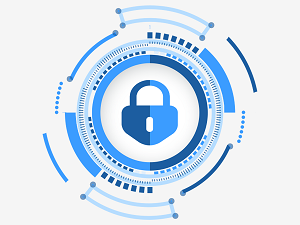Here are some methods and functions to enhance the security of client computers running Windows, Linux, and macOS:
Windows Clients:
- Keep the operating system up to date: Enable automatic updates to ensure that your Windows system receives the latest security patches and bug fixes.
- Install antivirus software: Use a reputable antivirus program and keep it updated to protect against malware, viruses, and other malicious threats.
- Use a firewall: Enable the built-in Windows Firewall or consider using a third-party firewall to monitor and control incoming and outgoing network traffic.
- Enable BitLocker: If your Windows version supports it, encrypt the hard drive using BitLocker to protect data in case of theft or unauthorized access.
- User Account Control (UAC): Keep UAC enabled to prompt for permission before running administrative tasks, preventing unauthorized changes to the system.
- Use strong passwords: Set complex and unique passwords for user accounts, and consider using a password manager to securely store and manage them.
- Disable unnecessary services: Disable or restrict unnecessary services and features to reduce the attack surface and minimize potential vulnerabilities.
- Enable Windows Defender: Windows includes a built-in security tool called Windows Defender. Ensure it’s enabled and regularly updated for real-time protection against malware.
Linux:
- Regular updates: Keep the Linux distribution and installed software up to date using the package manager and applying security patches promptly.
- Use a robust firewall: Configure the built-in firewall (such as iptables or firewalld) to filter incoming and outgoing network traffic and allow only necessary services.
- User management: Create separate user accounts with limited privileges and avoid running commands as the root user unless absolutely necessary.
- Secure SSH: If SSH is enabled, configure it to use key-based authentication instead of password authentication, and disable root login over SSH.
- File system permissions: Set appropriate file and directory permissions to restrict access to sensitive files and directories, reducing the risk of unauthorized access.
- Disable unnecessary services: Disable or remove unnecessary services and daemons that are not required for system functionality.
- Application source: Install software from trusted repositories or official sources, as they undergo security checks and updates by the maintainers.
macOS:
- Software updates: Keep macOS and installed applications up to date by regularly applying the latest updates from Apple and third-party developers.
- Gatekeeper: Enable Gatekeeper to ensure that only apps from verified developers or the App Store are allowed to run on the system, reducing the risk of malware.
- FileVault: Enable FileVault to encrypt the entire startup disk, protecting your data from unauthorized access in case of theft or physical access.
- Firewall: Use the built-in firewall in macOS to monitor and control incoming and outgoing network connections.
- Safari security settings: Configure Safari’s security settings to block pop-ups, disable automatic downloads, and enable the built-in fraud and malware protection.
- Secure user accounts: Create strong passwords, enable two-factor authentication (2FA), and set up separate user accounts for different users on the system.
- Privacy settings: Review and adjust privacy settings to restrict access to sensitive data and features for applications and services.
These methods and functions provide a starting point for enhancing the security of client computers across different operating systems. However, it’s important to stay informed about the latest security best practices and evolving threats to maintain a robust security posture.
